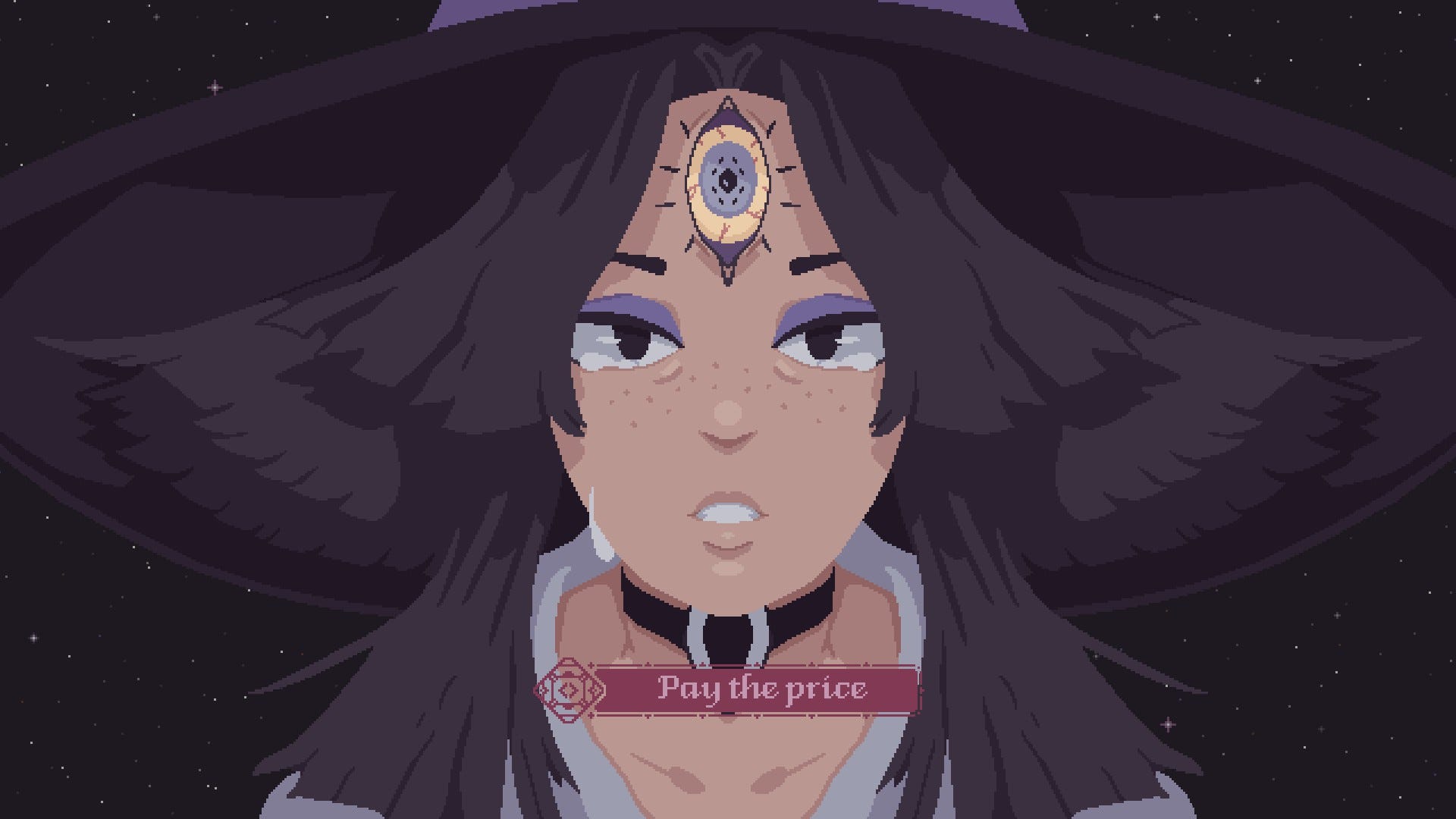
The first and only time I had a tarot reading was at one of the lowest points in my life, on the cusp of serious decisions where there didn’t seem to be any tolerable solution. It wasn’t a serious reading – my friend Veronica had a deck and a basic understanding of tarot, and we sat around her dining table on a quiet afternoon in Los Angeles, trying to make some mystical sense of my situation while laughing. As someone used to making snap decisions with clarity and (usually some) objectivity, I came away feeling a little disappointed, but curious; I’d always been interested in the idea of tarot as a narrative tool, but never found the time to learn. For the first time since then, in my first hour into the Cosmic Wheel Sisterhood, I found myself once again confronted with the known unknowns of divination. When I did my first card reading in the game, it almost felt like learning a new language.
The game’s protagonist Fortuna is a gifted oracle witch, exiled to a tiny asteroid for a thousand years without her tarot deck – an extraordinarily harsh punishment from the leader of her coven. After two hundred years of isolation, Fortuna understandably gets desperate – she summons Ábramar, a forbidden cosmic entity, and makes an even more forbidden pact with him to alleviate her sentence. With Ábramar’s help, she starts creating a new not-tarot divination deck to rebuild her craft and identity, and a path back to her coven. Through various chapters, the player learns about Fortuna’s past, her ascension to witchhood, and the circumstances surrounding her exile, culminating in a dramatic final act of judgment.
Mechanically, it’s a story-driven deck builder with a creative twist: Fortuna makes her own cards rather than drawing from a preset deck. Between visual novel-style dialogue sequences, she sits at a crafting table to determine (to an extent) the meaning of each card, and how it looks by manipulating the size and placement of its graphics. Each card has three components – the sphere (background), the arcane (main icon) and symbols (minor embellishments). Each component requires energy from the four elements of air, water, earth, and fire, which in turn affect the themes and emotions each card represents. For instance, combining an earthy sphere with earthy symbols produces a rather unbalanced card full of immobility and stagnation; a fire-and-fire card brims with overwhelming transformative power. The readings themselves are straightforward. Visitors come with problems, and Fortuna draws a single card for each of their queries, which can involve a bit of internal angst when the card turns out to be anything less than a glowing promise of success and serenity.




